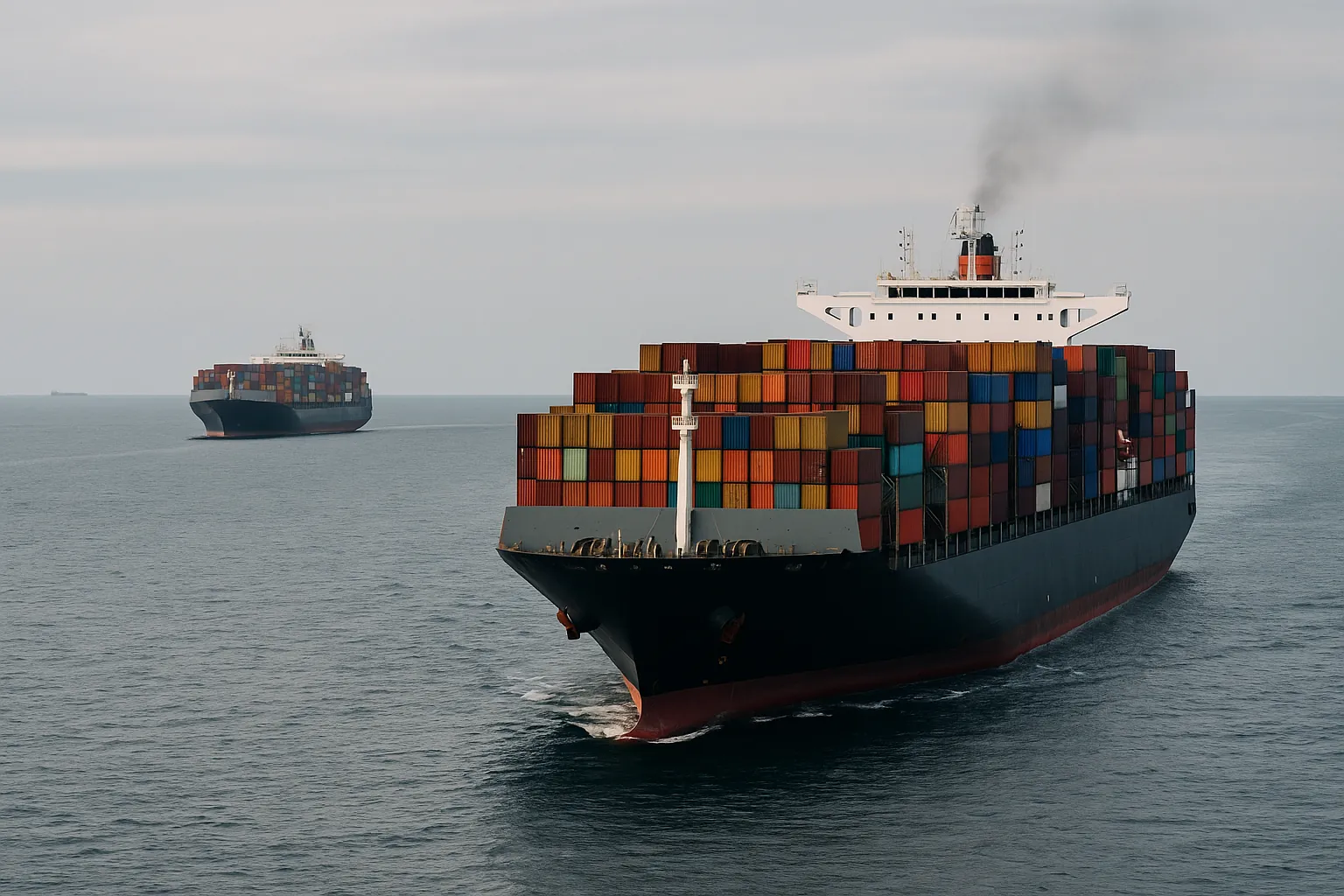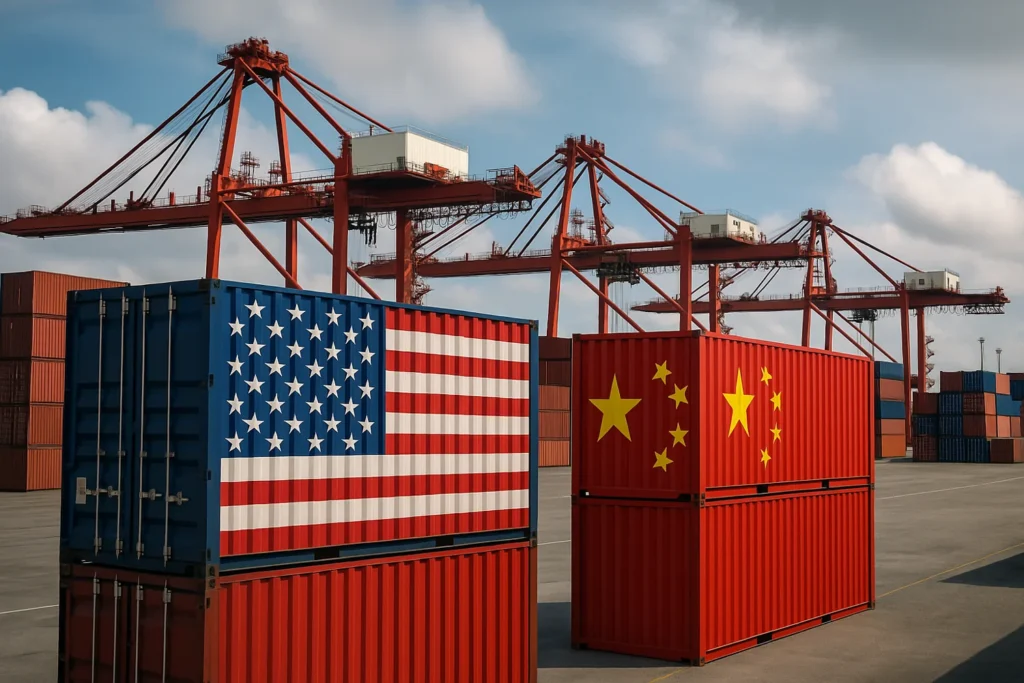When the US and China slapped new port fees on each other’s vessels this week, the world’s shipping lanes turned into the latest battlefield of economic rivalry. The phrase “US China port fees” suddenly entered the lexicon of trade watchers — a reminder that even the ocean is no longer neutral in this war of attrition. What Washington calls “fairness” looks to Beijing like another provocation, and both sides seem ready to test how far they can weaponize the sea.
Context: The new front in the trade war
The United States announced fresh port fees targeting Chinese-linked maritime and logistics firms, citing “unfair competitive practices” uncovered in a Department of Transportation review. Within hours, Beijing retaliated with mirror charges on US-linked vessels docking at its ports. These measures, effective immediately, threaten to hit around 11–13% of global container and crude tanker traffic — a staggering share in a world still recovering from pandemic-era disruptions.
Washington argues that Chinese state subsidies and opaque pricing distort competition. China, in turn, calls the US actions “economic coercion,” pointing out America’s own subsidies for domestic shipbuilders and energy exporters. The stage is set for a logistical standoff with ripple effects reaching every retailer and refinery.
Oppositional Argument: Politics over pragmatism
Let’s be blunt: the “US China port fees” episode has little to do with fairness and everything to do with election-year theater. Each side wants to appear tough — Biden to fend off Republican criticism, and Xi to prove resilience against Western pressure.
Shipping executives privately admit that both nations could have negotiated solutions through the International Maritime Organization. Instead, politics hijacked pragmatism.
This pattern — escalating rhetoric before midterms or Party Congresses — has become a ritual. The American electorate may never see the port fees directly, but they’ll feel them through higher import prices. Beijing, meanwhile, knows that global inflation weakens Washington’s credibility. The sea has become the new sanction zone.
Analytical Breakdown: The chain reaction of fees
Historically, maritime tariffs have been rare because of their blunt force. A fee on a vessel doesn’t just punish a company; it distorts the cost of goods from electronics to energy. Analysts at the World Shipping Council estimate that these mutual fees could raise freight rates by up to 18% by early 2026.
That means a $50 toy made in Shenzhen might cost $60 by Christmas — not because of production costs, but because of port politics.
Oil traders, too, are watching nervously. Roughly 7% of global crude cargoes move on Chinese-owned or US-linked tankers. Any slowdown or re-routing could send Brent prices spiking. The irony? Both governments claim to fight inflation. In reality, they’re feeding it.
Meanwhile, shipping insurers are quietly repricing risk zones, treating Pacific crossings like semi-sanctioned corridors. Some American importers are already booking via third-flag nations like Panama or Greece to dodge higher fees. Globalization is splintering into workaround economies.
Human Perspective: The workers and consumers left adrift
Behind the headlines, seafarers and port workers are collateral damage. A Filipino crew on a Chinese-chartered vessel described being stuck for three extra days in Long Beach, waiting for clearance amid new paperwork chaos. “We’re not the politicians,” one sailor told Reuters. “We just move the goods. But now even that feels political.”
Consumers, too, will feel the undertow. Retailers warn that shipping costs could add another 1.5–2% to consumer prices by spring. That’s on top of already high inflation from tariffs and supply chain shocks. For ordinary families, “US China port fees” translate into fewer gifts under the Christmas tree — and higher fuel bills in January.
Counterarguments
Defenders of the policy in Washington claim the fees protect American jobs and punish predatory Chinese practices. Yet evidence suggests minimal domestic benefit. The US Merchant Marine fleet remains too small to absorb redirected cargo, while Asian ports from Singapore to Busan will gladly take the traffic.
Chinese officials argue reciprocity is their only option — but punishing neutral shippers undermines Beijing’s own export stability. In truth, both governments are playing a zero-sum game where consumers pay the bill and populists score the points.
Conclusion: A self-inflicted storm
The “US China port fees” dispute exposes a deeper truth: neither Washington nor Beijing can afford to look weak, even when strength means mutual harm. The seas once symbolized free commerce. Now they’re collateral in a war of economic symbolism.
Unless pragmatism returns, this standoff could redefine global logistics — and remind the world that when superpowers fight over principles, ports drown in paperwork.
For traders, the message is clear: hedge your routes, diversify your supply chains, and never assume neutrality in a political ocean.
External Links
61 views






